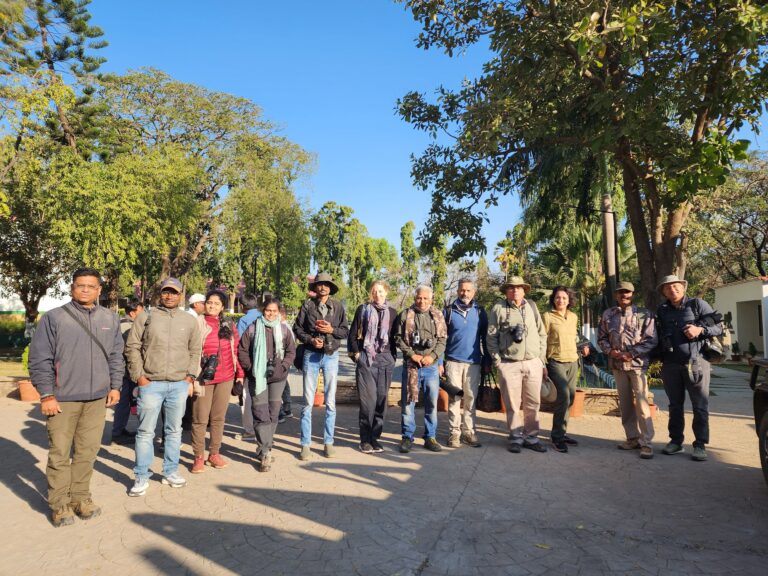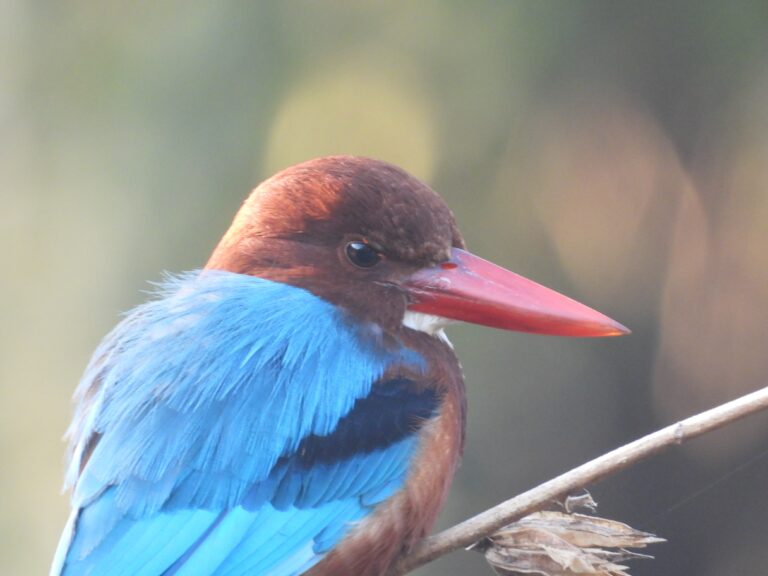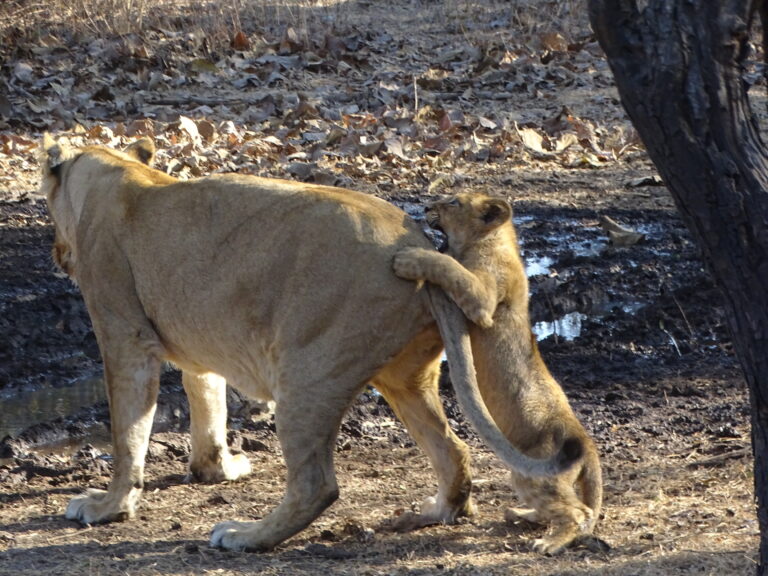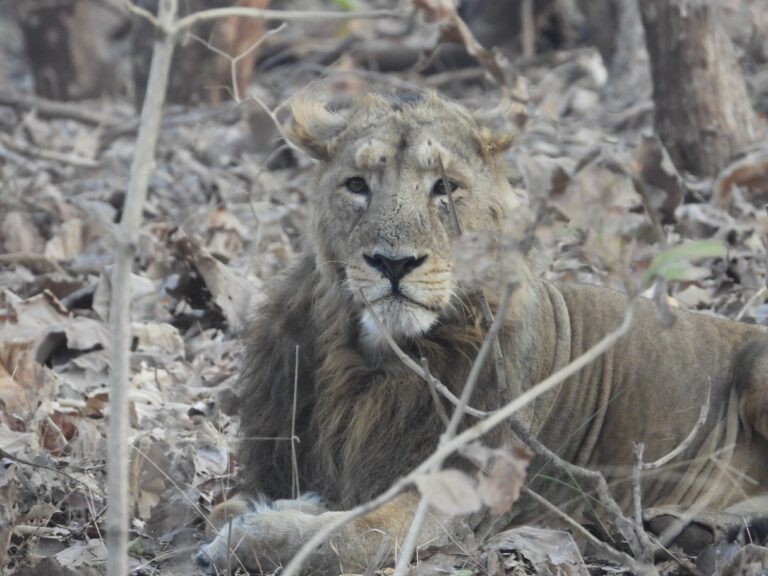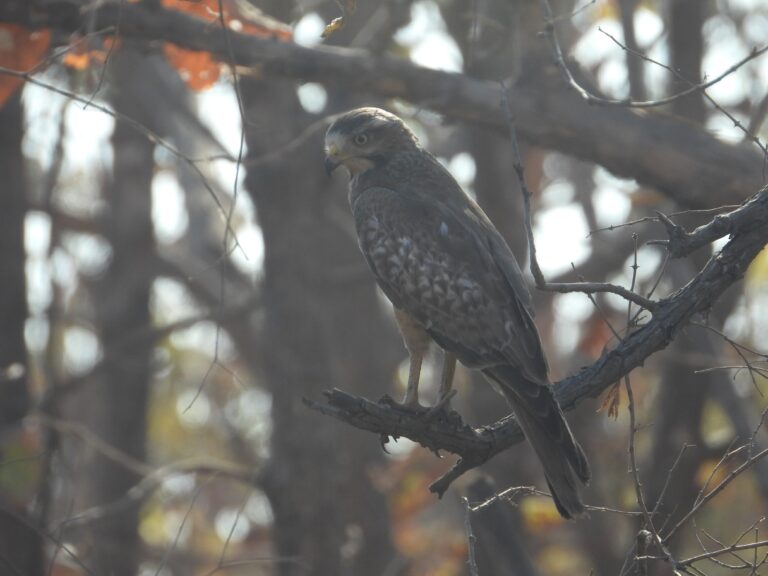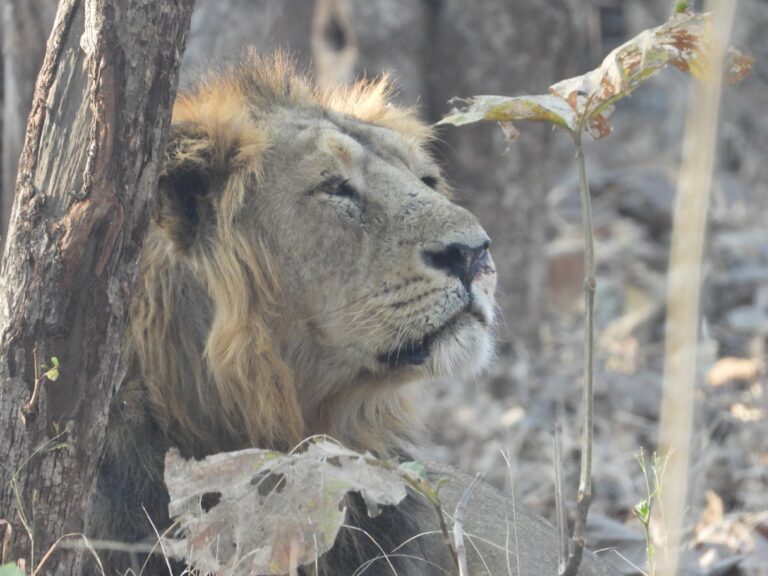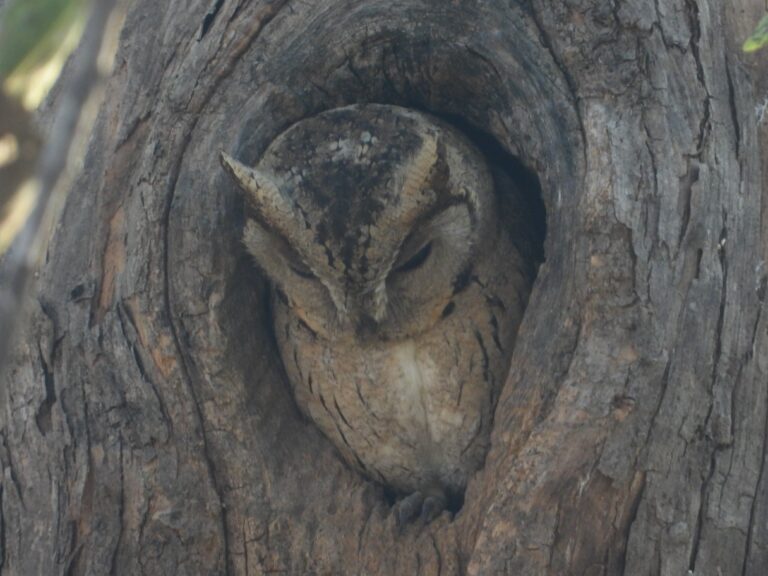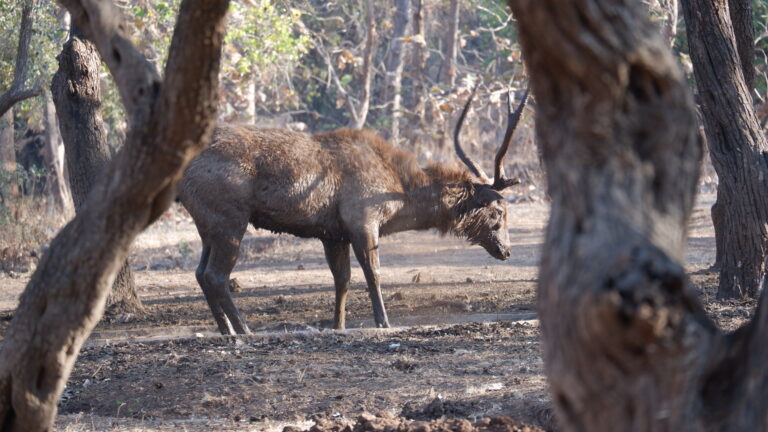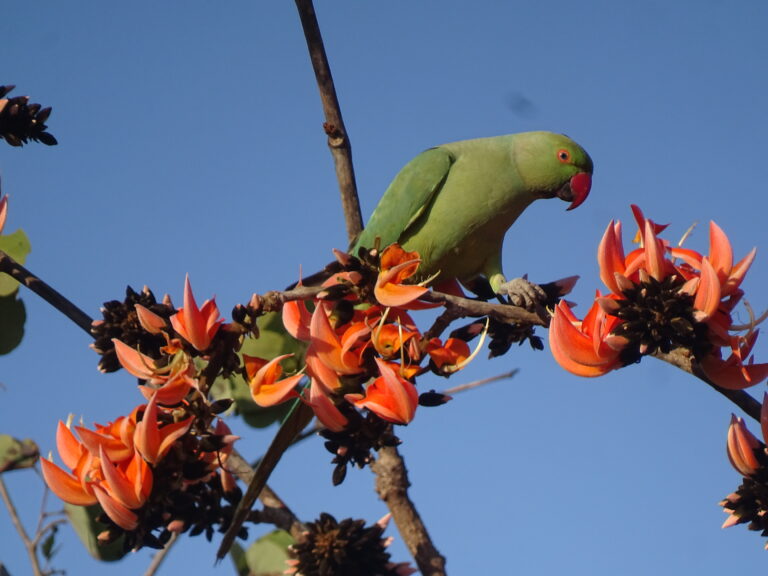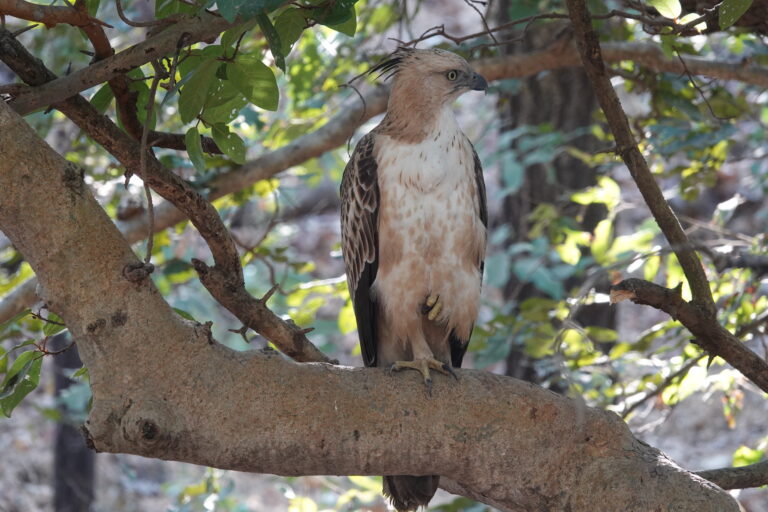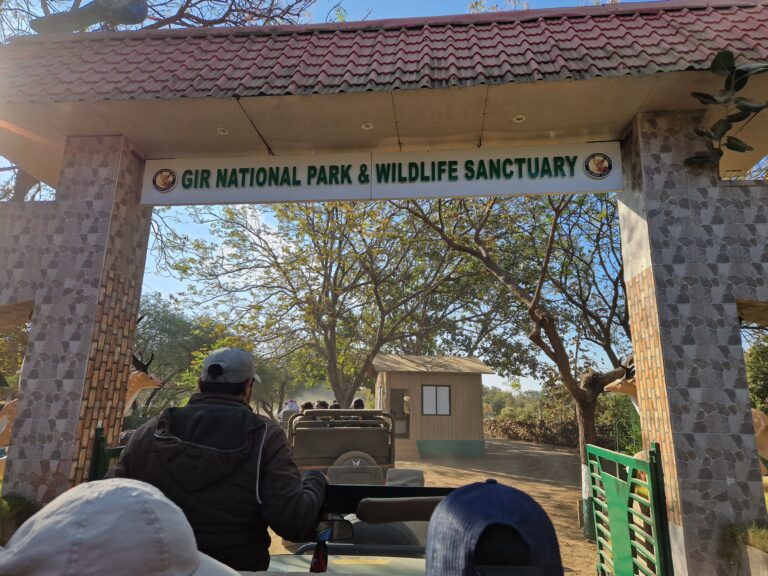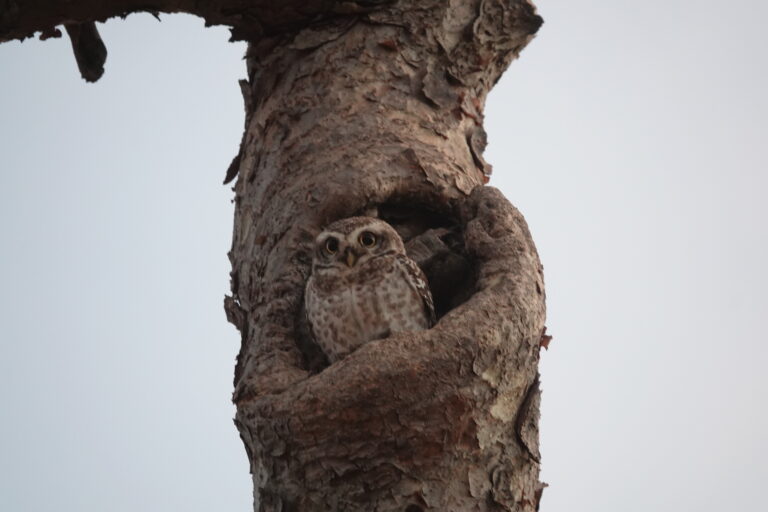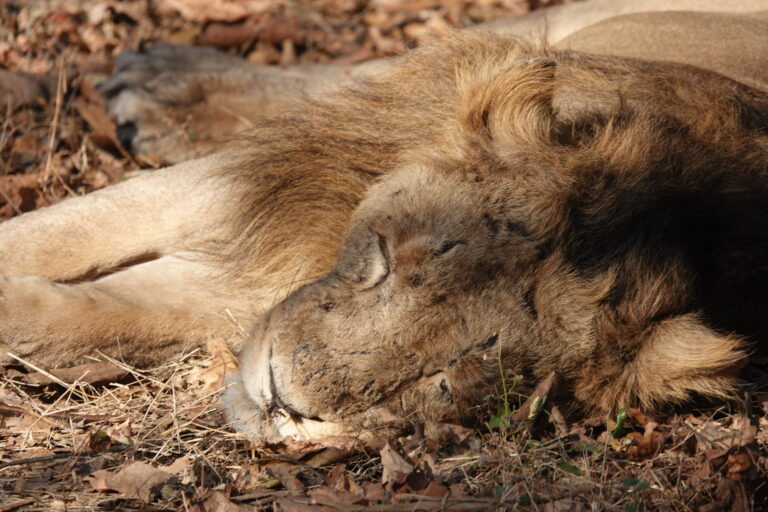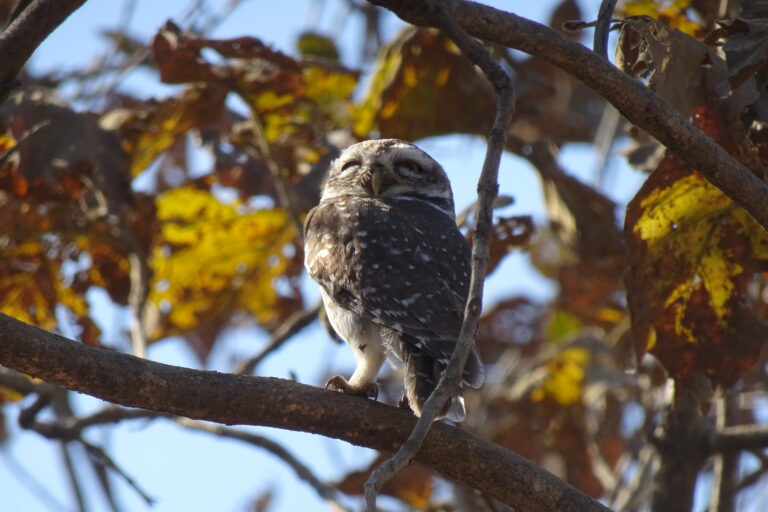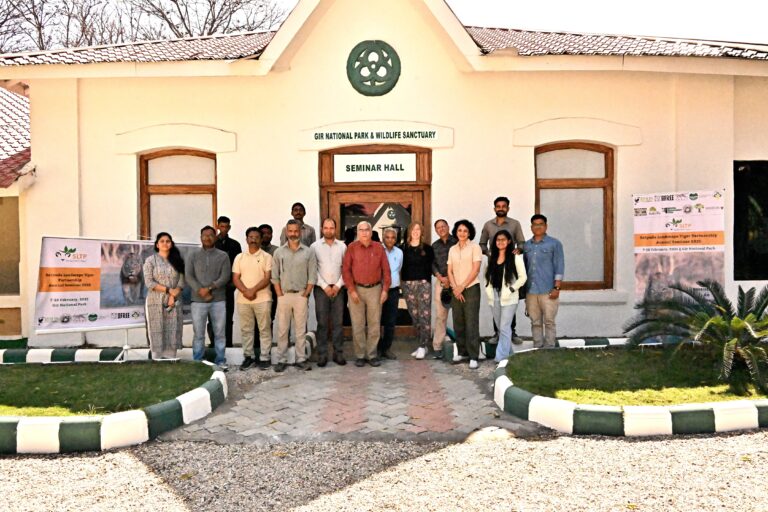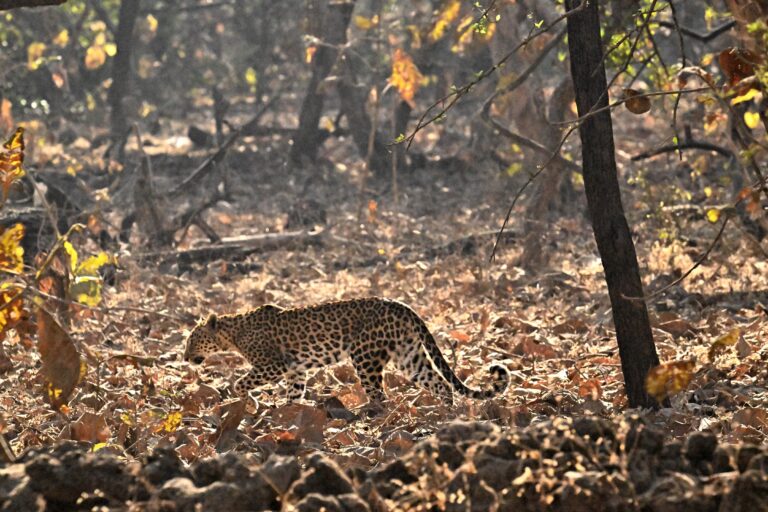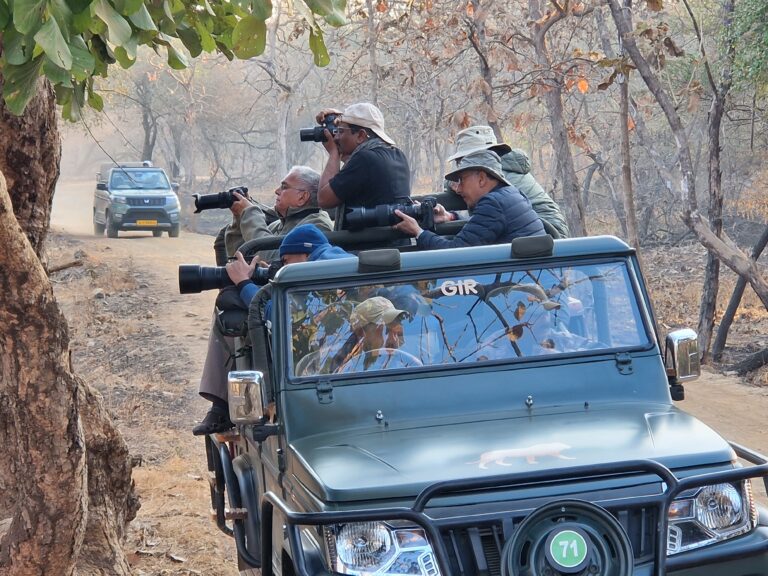The lesser-known lion
Did you know there are lions living in India? The western coastal state of Gujarat, including Gir Forest, is the only place in the world where Asiatic lions still live in the wild.
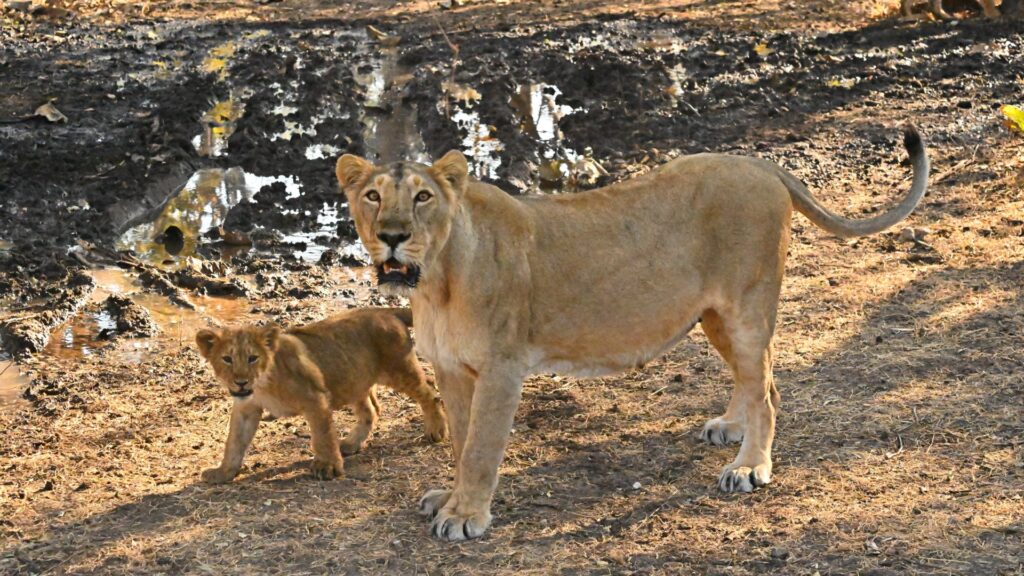
Asiatic lions (c) Harshawardhan Dhanwatey
The remarkable story of India’s lion population is one that brings us all hope. Brought back from the brink of extinction, today nearly 700 Asiatic lions are found in the dry deciduous Gir Forest and surrounding areas, including coastal habitats.

Dr Nikki Tagg
What can we learn from the successes and challenges of protecting these rare big cats – the only wild lions outside of Africa? Slightly smaller than their African cousins, as populations increase, can they live safely alongside people? And what can this teach us about improving our own extensive tiger conservation programme?
Recently, our hard-working Satpuda Landscape Tiger Partnership partners – brought together more than 20 years ago with support from Born Free – visited Gir Forest National Park and Wildlife Sanctuary to find out more. Born Free’s Head of Conservation, Dr Nikki Tagg, shares her experience of the trip.
Lions in Asia
The African lion, so familiar to Born Free supporters like you and captured in our beautifully illustrated Born Free logo, is at the heart of our work. Fewer people might be aware of the presence of lions in Asia. The Asiatic lion used to roam across the Indian subcontinent, as well as parts of Central Asia, such as Iran, Pakistan and parts of Afghanistan. Now they are separated from African lions by 1,800 miles (3,000km) and the Arabian Sea, living only in one corner of northwestern India.
Originally thought to be a separate sub-species, Asiatic lions (previously classified as Panthera leo persica, now Panthera leo leo), are slightly smaller, and have a less bushy mane particularly on the top of the head, compared with their African counterparts. Research has found that Asiatic lions are more closely related to Western and Central African lions than with those living in Eastern and Southern Africa.
Protecting tigers, learning from lions
Every year, our Satpuda Landscape Tiger Partnership partners (SLTP) convene for a seminar. Here we share ideas and identify solutions to the challenges of tiger conservation. This year, we held our seminar at Gir – the perfect opportunity to discover more about the fascinating lions who live there.
While our usual focus is of course tigers, we embraced spending a few days learning about and observing this other Asian big cat species. And for a very good reason. Though different in many ways – in terms of their ecology, behaviour, and reputation – the conservation of lions and tigers has similarities. This includes shared challenges that the partners were keen to learn about, from those involved in implementing a highly functional operation.
Gujarat State Forest Department manages Gir, the tourist venture and the conservation of the lions. They represent a very impressive conservation outfit in India, with the Asiatic lion being a flagship species for conservation. With 60,000 tourists visiting the park annually, Gir and its lions are hugely valued by the Indian government and receive a healthy annual budget for operations.
Despite only having one protected area in the Gujarat State, they received around 20,000,000 rupees (approximately £180,800) for 2022-2023. This is a similar amount to that received by states that have eight or more protected areas.
Almost driven to extinction

Asiatic lion (c) Mandar Pingle, Satpuda Foundation
The Asiatic lion has not always been protected so well. Likely as a result of hunting by Mughal emperors in 16th to 18th century and later British colonial rulers in India, lion numbers were dramatically reduced and they were extirpated (eradicated) from much of their range by the early 19th century.
Thankfully, at the end of the 1800s, the Gir forest was declared a protected area for the lions, and in 1965, it became a national park. In 1968, fewer than 200 lions were living in the wild. However, thanks to excellent conservation work and increased protections, the Asiatic lion has made a stunning comeback. Now a likely 674 live in and around Gir Forest National Park today.
Only in Gir are lions protected and viewed by tourists. An estimated 344 lions live within Gir Forest National Park, and 330 live outside of Gir, some in sanctuary areas and others in unprotected zones of Girnar, Mitiyala, Bhavnagar, and along the coast. Ensuring the survival of this lion population has also benefited other animals. The forests of Gir are also home to leopards, striped hyenas, golden jackals, Bengal foxes, chital, nilgai and chinkara (see gallery below).
Conservation success story
The lions’ comeback means they are living at fairly high density in Gir National Park today. Their behaviour, combined with the open dry habitat of Gir in February, made them easy to spot during our visit. We saw a mating couple on two separate occasions – one day, two other nearby males were being very vocal in a bid to gain access to the female.
Another day, the same couple seemed oblivious to the presence of our vehicle, as they mated right by us. We observed a female with four young cubs of around a month old, who passed close to the vehicles to access an area of water. Here the female drank for a good few minutes as her little ones played around her.
The conservation of the Asiatic lion is a success story. An upcoming census planned for May 2025 will demonstrate the impact of the last five years of efforts on the population. As conservationists, their story gives us hope and provides opportunities to learn. However, this population is far from safe – in relatively low numbers (compared with the 20,000 estimated lions living in Africa) and living in a single isolated population, they remain vulnerable to extinction.
Efforts and plans to translocate individuals elsewhere in India to encourage additional populations have been considered in the past but have not taken place. Any flare up in conflict with local people could risk leading to retaliatory attacks on the lions.
As you can imagine, we learnt a lot during our visit to Gir – and one thing that loomed large was the importance of public understanding and acceptance. Living in increasingly close proximity with a growing human population, such large and potentially dangerous animals will always be vulnerable. With careful and sustained efforts, however, the Gir lions will persist, and we can continue to learn from their success.
Gir Forest National Park and Wildlife Sanctuary

